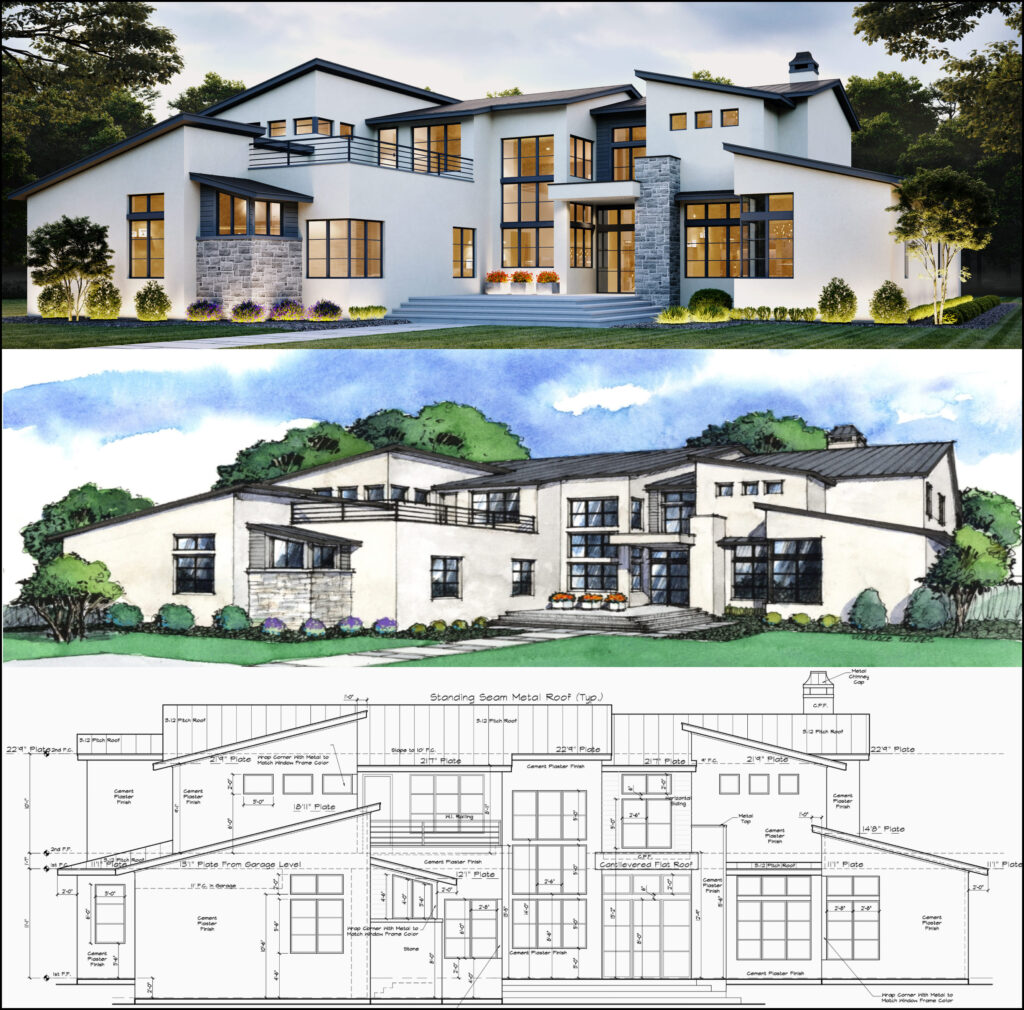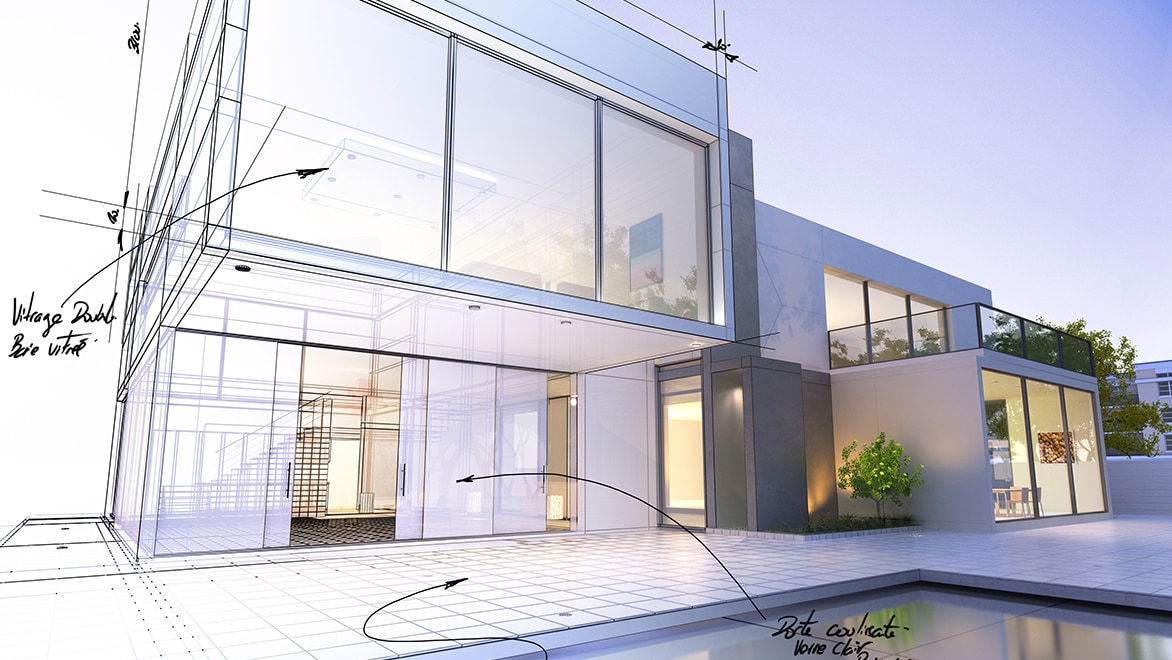Why CDA Architects Are Leaders in Architectural Design and Innovation
Why CDA Architects Are Leaders in Architectural Design and Innovation
Blog Article
Recognizing the Collaborative Process In Between Designers and Engineers in Modern Building And Construction Projects
The collaborative procedure between designers and designers is important in contemporary building jobs, as it balances style intent with design feasibility. Exploring these dynamics exposes insights that might dramatically affect project outcomes and total market standards.
The Relevance of Partnership
The joint synergy between architects and engineers is vital for the successful awareness of any building and construction job. This collaboration combines distinctive expertise and point of views, allowing the assimilation of ingenious design with functional design options. By working together, designers and engineers can guarantee that a job not only satisfies aesthetic and practical requirements however additionally follows security, sustainability, and budgetary constraints.
Cooperation promotes a common vision, facilitating the alignment of goals and expectations from the beginning. This alignment is vital in dealing with potential difficulties and mitigating dangers that can occur throughout the task lifecycle. A collective method permits for the effective allowance of resources, optimizing both time and cost.
The significance of collaboration includes the iterative process of style and construction, where feedback from designers can inform building choices, leading to more possible and sustainable designs. Conversely, designers can inspire engineers to assume creatively about just how to accomplish structural stability without compromising imaginative intent. Inevitably, the collaborative connection in between architects and designers is not simply useful; it is fundamental to the production of top quality, functional, and cutting-edge developed atmospheres that satisfy the demands of society.
Communication Techniques and Devices
Effective communication methods and devices are vital for fostering cooperation between architects and designers throughout the job lifecycle. Establishing clear channels of interaction is important to guarantee that all team members are lined up with project goals, timelines, and obligations. Routine conferences, both in-person and online, supply opportunities for stakeholders to discuss development, address problems, and make educated decisions.
Making use of project management software program, such as BIM (Structure Details Modeling) systems, enhances collaboration by allowing real-time sharing of style alterations and technological requirements. These devices promote transparency, allowing engineers and engineers to imagine changes and assess their influence on the total job.

Shared Goals and Task Vision

Establishing common objectives entails open discussion and a detailed understanding of each discipline's contributions. Architects normally concentrate on design intent, spatial partnerships, and individual experience, while engineers stress architectural honesty, systems functionality, and conformity with guidelines (cda architects). When these viewpoints are straightened, the result is a natural Go Here job that sticks to both imaginative desires and technological usefulness
Furthermore, a distinct task vision fosters liability amongst staff member, encouraging each individual to take ownership of their function in accomplishing the preferred outcome. Normal check-ins and collaborative workshops can additionally strengthen this commitment, enabling for adjustments to be made as the task advances. Ultimately, a shared vision not just improves synergy but likewise elevates the top quality of the last deliverable, causing successful task conclusion.
The Role of Technology
Leveraging innovation has actually come to be important in improving cooperation in between architects and engineers. Building Information Modeling (BIM) stands out as a critical innovation, allowing both designers and engineers to produce in-depth 3D designs that encapsulate layout intent and architectural honesty.
Furthermore, cloud-based platforms enable seamless collaboration, allowing project stakeholders to accessibility and update job data from anywhere. This fosters a society of openness and liability, as adjustments can be tracked and assessed in real-time. In addition, mobile applications additional boost interaction, giving on-site teams with immediate access to project requirements and updates.
Emerging technologies such as artificial knowledge and equipment knowing are also beginning to play a duty in anticipating analysis, assisting groups identify possible problems before they arise. Eventually, the role of modern technology in architecture-engineering collaboration not only improves process efficiencies however additionally enhances technology, leading to even more successful task outcomes. By welcoming these technological innovations, architects and engineers can ensure an extra natural and effective joint procedure throughout the building lifecycle.
Study in Effective Collaborations
Countless study highlight the profound impact of effective partnerships between designers and engineers on job end results. One notable instance is the collaboration on the High Line in New York City City, where landscape architects, designers, and metropolitan coordinators collaborated to change a deserted railway right into a dynamic public park. This multidisciplinary approach not just enhanced the visual top quality yet additionally find made sure structural safety and environmental sustainability.
Another exemplary instance is the layout and building of the Sydney Concert Hall. The collaboration in between engineer JÃ ¸ rn Utzon and architectural engineer Ove Arup exemplified innovative problem-solving. Their cooperation permitted the famous shell-like design while addressing complex design challenges, inevitably bring about a classic architectural work of art.
The Burj Khalifa in Dubai even more shows the relevance of joint efforts. cda architects. The integration of design and design competence allowed the project team to achieve unmatched elevations while sticking to Learn More safety and security policies and visual vision
These instances emphasize the importance of communication, trust fund, and shared objectives. In today's intricate construction setting, such collaborations are necessary to browsing difficulties and supplying projects that fulfill both useful and visionary goals.
Verdict
In conclusion, the cooperation in between architects and designers is crucial for the success of contemporary construction tasks. Reliable interaction methods, a common project vision, and the integration of advanced technologies are essential components that facilitate this partnership. By fostering a society of responsibility and leveraging tools such as Structure Information Modeling (BIM), teams can browse task intricacies, guaranteeing that visual, useful, and sustainability purposes are accomplished. Eventually, this synergy causes innovative and effective project end results.
Report this page